Disclosure: Privacy Australia is community-supported. We may earn a commission when you buy a VPN through one of our links. Learn more.
Best Crypto CFDs in Australia

Trading in CFDs is a relatively new way of trading cryptocurrency. CFDs have been around for decades, but only since cryptocurrencies exploded in value did they see trading in CFDs.
CFD’s advantage is also their biggest disadvantage.
Table of Contents:
At a Glance – Pros and Cons
CFD Pros
- Lets you place orders against other market forces
- Lower initial investment than the currency itself
- Benefits from research and market knowledge
CFD Cons
- Other people can place orders against you
- Low investment means a competitive market
- Requires research and market knowledge to keep ahead of others
The essential thing to understand about trading in CFDs for cryptocurrency is that it is different than trading CFDs for stocks. When you are trading for stocks, you only have to keep track of the stock.
But when you are trading CFDs for cryptocurrency, you have to keep track of every market the currency operates in, as well as the value of the currency itself. This is a deep layer of complexity.
Even cryptocurrencies have limitations. They might not suffer from inflation through being printed too often, like paper money and some stocks do, but they can still suffer from too many people investing in them. This is what CFDs capitalize on, however: The inevitable bursting of the crypto bubble.
You will not (or at least should not) plan to capitalize off of an economic collapse through CFDs. Rather, you will use CFDs to take advantage of the natural cycle of booms and busts of all economic systems.
To do that, we have researched dozens of cryptocurrencies. Here are our ten picks for the best cryptocurrency CFDs in Australia, which will serve as a guide on how to start trading crypto in 2024.
10 Best Cryptocurrency CFDs in Australia
- Bitcoin – Best Overall Cryptocurrency CFD
- Ethereum – Best Blockchain Technology
- Solana – Best New Currency
- Cardano – Best Limited Quantity Currency
- Binance Coin – Best Exchange Coin
- Tether – Best Stablecoin
- Terra Luna – Best Platform Coin
- Doge Coin
- Avalanche – Best Beginner Token
- Polkadot – Best Integrated Blockchain
1. Bitcoin – Best Overall Cryptocurrency CFD
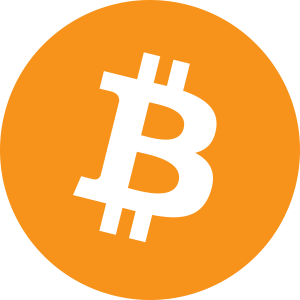
You do not have to go far to find opinions about Bitcoin. From scathing criticisms to hopeful analyses, Bitcoin has been the defining force of every movement that the cryptocurrency market has made.
It is not a surprise, then, that it has highly valuable CFDs. But there is a reason why cryptocurrency CFDs have only come around in the last few months. And that is because Bitcoin is forecasted to lose value.
If you know anything about CFDs, you know that this can be either a blessing or a curse. Buying a currency on CFD means that you are buying it for a different price than the price it currently sits at, usually cheaper. This means that a forecasted recession is the perfect time to buy.
Why buy Bitcoin?
The thing about Bitcoin is that even though it is going to go down in value sooner or later, it will never be worthless. Most people understand cryptocurrency through Bitcoin. As a result, as long as there is a cryptocurrency, Bitcoin will be there to represent it.
That means that buying it as it reduces in value can mean making returns when it increases in value. There is and always has been skepticism around Bitcoin. Some people believe it will decrease in value, only to remain there and never get more valuable again.
The issue with that line of thinking is that it is based on the observation that Bitcoin has never decreased in value before. This is a flawed observation. It is true that it has had a meteoric rise, but it is not perfect.
There have been staggers in its increase in value, and even dips, just like any currency. The people who call its value into question are the people who believe it to be a huge Ponzi scheme.
People who harbor such a perspective can hardly be considered experts on it. Bitcoin got where it is not by being the first cryptocurrency (it was not the first, as it happens) but by basing itself around security.
The blockchain technology that back its value means that it always has the potential to recover. And its use in marketplaces all across the world means it has many practical applications.
The Downsides of Bitcoin
If there is a drawback to Bitcoin CFDs, it is that the ensured value of Bitcoin means that you are unlikely to procure a CFD for any large amount of Bitcoin. The only people who will sell CFDs of their Bitcoins in response to financial doomsaying are people who disbelieve in the currency staying valuable.
What you will notice is that the people who hold onto the most Bitcoins are also the people with access to the most information about the marketplace. The more Bitcoin you have, the more reason you have to hold onto it and claim it is valuable. As such, you will not get a hold of huge sums of it.
This translates into a steep initial barrier for entry. That means investing a lot of money into a form of trade that is notorious for being risky. Not many people are willing or even able to stomach that.
Pros
- Reliable
- High returns
Cons
- Requires patience
- Expensive to buy even when it is not valuable
2. Ethereum – Best Blockchain Technology

While Bitcoin is the most well-known cryptocurrency, Ethereum is the most stable. This has done a lot to both increase and limit its value. And it should be noted that limiting value is different than lowering it.
On the one hand, Ethereum is based around an incredibly rigid and reliable blockchain technology. Unlike Bitcoin, which most people mistake for being the first of its kind, Ethereum is actually the first of its kind when it comes to this technology. This means it takes extra steps to ensure validity.
For every link in the blockchain, Ethereum grows more and more secure. That means that it grows more valuable at a steady rate, based mostly on its blockchain and the uses of the currency itself. This upward force is not strong, but it is almost impossible to undermine due to it being recursive in many ways.
On the other hand, this makes the currency unappealing to certain investors. The thing is that tons of investors like markets where people can and often do find themselves getting ripped off.
Why Trade Ethereum?
While market instability means that you always have a chance of being swindled or going bankrupt due to forces outside of your control, it also means that there are plenty of people who are vulnerable to swindling and bankruptcy within the market. This instability is highly appealing to some. Why?
Well, it is simply because many markets run on this sort of exploitation. It is that exact asymmetric dynamic that appeals to people looking to make a quick buck.
In short, if a marketplace or currency does not allow someone to make a lot of money without doing a lot of work, it becomes less appealing to investors at all levels. Many people have been trained to think of markets needing to work this way. So, when Ethereum is more stable than that, those same people think of it as a market where the upper limit to one’s returns relative to their effort is low.
Strictly speaking, they are not wrong. You will get less out of investing in Ethereum now than if you invested in Bitcoin ten years ago. That comparison might strike you as odd, but it is the comparison many people make with cryptocurrency. Remember, they are looking for a winning lottery ticket.
But just because Ethereum does not provide a place to exploit your fellow man’s labor as if it were your own, that does not mean you should abandon it. In fact, it can be a great place to trade in CFDs.
The thing about trading in CFDs is that there are two ways of going about it: High volume trading and low volume trading. High volume trading is not, as one might expect, trading in large amounts of money. It can be that kind of trading, but it is more about maximizing the number of trades you do.
These trades can be small or large, but the advantage you are seeking out is in doing a lot of them to accrue value over many trades.
This is in contrast to low volume trading. Low volume trading does not need to be expensive, but it often is. This is because low volume trading either happens for a reason (making each individual trade because you know it will be valuable to you) or because someone is looking for a “lottery ticket” trade.
In short, stable currencies like Ethereum are good for CFD trading because you can make a deliberate effort to trade in high volumes with a low cost. This allows you to control your risks much better.
Pros
- Reliable
- Few negative market forces
- Easy to trade and use
Cons
- Low risk means low reward
- Contains transaction fees
3. Solana – Best New Currency
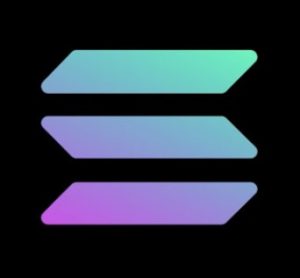
Coming onto the market in 2020, Solana is a currency with a similar blockchain structure to Ethereum. But where Ethereum requires a steep transaction fee to function, Solana does not.
The reason Ethereum (and just about any cryptocurrency) will require a transaction fee is because they operate on a system called “proof of work”. This means that the blockchain helps verify that the money belongs to the person that is trying to use it. There is a downside to this, however.
With cryptocurrency getting older and more complex, it takes longer for each link in a blockchain to be accessed. If you are just buying gas at a gas pump, you do not want to be waiting ten minutes for a transaction to authorize with every link in a blockchain in order to pay for it.
The solution that most currencies come up with is using transaction fees. You pay part of your transaction in advance from a separate, secured account, and that allows you to use your cryptocurrency at the speed of a normal currency. But that can be expensive.
Solana solves this by using a “proof of stake” system. As far as you will ever be concerned, it is basically another way of doing transaction fees. But it all happens under the hood at a much faster rate.
Rather than relying on the blockchain to confirm the existence of the money involved in a sale at the moment of the sale, instead the system seeks out a “lender” who provides a “stake” to your transaction.
This lender is basically betting that your sale is legitimate. If they are right, you pay them a small transaction fee for the convenience they provided. If they are wrong, then their money mitigates the loss incurred by Solana issuing what is essentially a blank check (which rarely, if ever, happens).
You will likely not run into this system much. Or rather, you will operate nearby it constantly, but rarely will you notice it as anything other than a system for keeping your transactions fast and cheap.
Because Solana is a new currency that operates off of a new system of establishing value, it has a bit of turbulence behind it. This makes it exactly the kind of crypto that you want to capitalize off of with CFDs.
Why Trade Solana?
The low transaction fees of Solana have a hidden advantage to them that is not going to be as obvious when you are just using it to buy gas: Solana not only trades cheaper, but also faster than others.
This means a lot for trading in CFDs. It means greater turn arounds on market changes, which itself will end up meaning that market trends will be more dramatic. And listen, people might act like they do not like market trends being chaotic, but that is exactly when the most easy and dishonest money is made.
Does this mean that Solana is built off of easy and dishonest money? No. It means that it sometimes responds to market forces that are dishonest. This can be just as bad in some people’s eyes.
But if you are able to track those market forces and predict them, then you will be able to exploit them. This sort of future-telling is an important skill in CFD trading. While high volume trading of stable currencies relies heavily on patience, high risk trading of unstable currencies takes foresight.
Foresight is developed by research, knowledge, and pure willingness to take a gamble. Of course, this means that you should expect to lose in your “bets” every so often. After all, CFDs are essentially you gambling the value of a currency against the perception of the currency’s owner.
In Solana more than any other currency, you should be wary of someone who is too willing to part with it. Solana is definitely a currency where you should be skeptical of anyone who offers you a CFD.
If it is too good to be true, then it probably is not true. Alongside that, you should remember that anyone who is willing to accept a CFD you offer out of hand is likely either a fool or takes you for a fool. This is a harsh truth, but always be ready to pivot on a deal before it is locked.
It can be scary, especially for inexperienced traders, to pivot on anything.
Your average economics class will tell you that a deal is a deal. But there is no deal without a contract, and you should always be avoiding signing contracts for as long as you can anyways.
The person you are offering a CFD to can be your best source of information, especially with a currency like Solana. The “game” of CFDs is that you are trying to set the price as low as possible, while the person you are buying from wants the price as high as possible. Simple, right?
Well, there are a lot of ways to negotiate a “high” price. If they want to part with less currency than what you are asking for, then they are telling you that they expect the price to be stable later.
If they are willing to offer an expansive deal with little haggling, then they are looking to offload their currency before it tanks in value. This can be good, despite appearances. Even if you have to buy it slightly over market value, large amounts of currency are valuable even if the currency itself is not.
In short, there are a lot of tricks you can employ with an unstable currency.
Pros
- Bigger chance to win big
- Rewards knowledge and finesse
Cons
- Unstable
- Without knowledge or finesse you will lose money
4. Cardano – Best Limited Quantity Currency
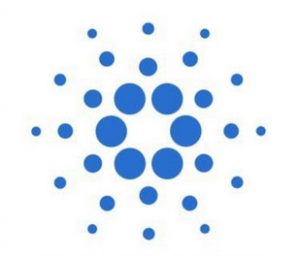
Cardano is a cryptocurrency with an interesting history. It was founded by one of the co-founders of Ethereum, except it uses a proof of stake model of finance rather than a proof of work model.
But the more unique feature of it comes from its supply. Cardano has a set number of coins in existence, with only so many of those coins released into the world. There are 45 billion total coins, and only 31 billion of those are currently tradeable. This means that their supply is easy to predict.
Unlike paper currency, cryptocurrency cannot really have more currency printed. Crypto relies on the integrity of everyone involved in the transactions that use it. That means for the currency to be valuable, there can be no risk of the owner of the coin to print more without warning.
If Cardano ever “printed” more coins, it would immediately lose value to almost nothingness, as it would lose the trust of those who hold it in the process. That means that Cardano’s value comes from two things: Its uses in the world, and its stability relative to other market forces.
Why Trade Cardano?
Those are the fundamentals of Cardano. But what makes it worth trading?
Cardano is another case of a highly stable cryptocurrency that is insulated from many (but obviously not all) market forces. It combines this with a proof of stake model and a relatively low market share to create a coin that is easy to extract value from, so long as you are willing to be patient with it.
Due to the proof of stake model, transaction fees with Cardano are much lower than normal. However, they also offer an opportunity for a unique kind of trading. Since the people who offer stake in a proof of stake model are opt-in users of the currency, you can actually purchase a CFD for their stake.
That means that you can buy the fee they would get paid off of them. This is an extremely unique CFD, as it can be traded in more than just Cardano. It is a complicated process, but it is one of the few circumstances where everyone involved in a CFD can benefit approximately equally.
To begin with, it requires you to buy a Cardano CFD from a stakeholder. That means you purchase the stake they put down in advance. Once they get a return on that stake, you give them money, and they give you the return on the stake. But while the stake they receive is Cardano, the money need not be.
Imagine that you offer a Cardano stakeholder $5 AUD for the next stake they do. The stake they do will earn them $10 AUD of Cardano. But because Cardano is less likely to increase in value than the dollar, the $5 AUD is actually more valuable than the $10 AUD of Cardano. Or rather, it will be in the future.
This means that the stakeholder gets a currency that will be more valuable later, and you get a currency that is more valuable now. You have both successfully profited off the same transaction.
And this is just using a stable currency. You can do this with commodities, other coins, shares, options, or even other CFDs. There are nearly infinite layers to these kinds of trades, so do not be afraid to get creative. Perhaps the best part of this is that you do not need to be creative in order to profit from it.
Cardano’s proof of stake system combined with its limited quantities mean it is easy to trade it for things other than itself. Just be aware that Cardano can be seen as only temporarily valuable for that reason.
Pros
- Rewards creativity
- Limited quantity keeps value stable
Cons
- Will likely not be around forever
5. Binance Coin – Best Exchange Coin
Not every cryptocurrency is trying to be the next dollar bill. While most cryptocurrencies have a niche, Binance Coin is a cryptocurrency whose niche is buying and trading other cryptocurrency.
Why Trade Binance Coin?
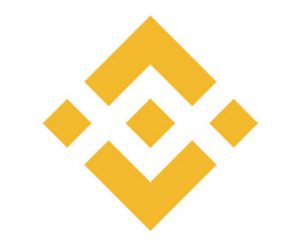
When trading in CFDs of Binance coin, you can be almost guaranteed to get value out of your trade, so long as you know your currencies.
This is because Binance coin was conceived not as a generalized currency (although it can be used as one) but as a currency that helps bridge gaps between currencies.
What this means is that Binance has always been used as a means to turn one currency into another. Imagine you get a hold of an obscure cryptocurrency. Something well known enough to be valuable, but not accepted widely enough to buy anything. Dogecoin is a good example of this, but there are others.
You get a sum of Dogecoin worth $50. Since you actually want to spend that coin, you need to turn it into Bitcoin, which retailers will actually take. Or perhaps you want to turn it into a coin banks will store, or can be used on a crypto credit card. Whatever your reason, you need to turn it into something else.
But you run into a problem: Doge can’t be turned into Bitcoin (it actually can, but for this exercise we are imagining that it cannot). Binance coin is the solution. Doge cannot be converted into Bitcoin, but it can be converted into Binance coin. And Binance coin can be turned into Bitcoin.
And there is where you can find the value in CFDs of Binance Coin. Once you have the Binance coin, you can turn it into almost any coin you want. That means that you can turn a coin that is falling or has fallen in value into a coin that is rising or will rise in value. This is the essence of CFDs, but with more options.
The greatest drawback is always going to be the knowledge it requires, along with the fact that Binance coin is not terribly useful on its own. It can be used as its own currency, but it is a more niche currency when it comes to real world retailers compared to things like Bitcoin and Ethereum.
Pros
- Offers tons of versatility
- Allows access to niche markets
Cons
- Does not work well as a normal currency
- Requires lots of knowledge to make lots of returns
6. Tether – Best Stablecoin

A “Stablecoin” is actually a word in crypto spaces for normal, real-world currencies like AUD and USD. These are currencies that are traded basically everywhere and reflect real world commerce.
But while basically all Stablecoins are real world currencies, Tether is a cryptocurrency that seeks to open the way between the real world currency market and the cryptocurrency market.
Tether is a Stablecoin because its value is always tied to the value of the US dollar. Whenever the dollar’s value shifts, more Tether is “printed” (really sold by the originators of Tether, therefore decreasing the value of all Tether to a target amount).
As a result, there is always approximately the same amount of Tether in the world as there are dollars.
Why Trade Tether?
Trading Tether, particularly on a highly speculative medium like CFDs, means that you get access to the dollar, as well as access to all the currencies that you can trade for Tether. This is another situation where the currency’s versatility is more valuable than the actual currency you are trading for.
Tether being tracked to the USD, but not actually being the USD means that you can use information on how the USD works to make trades that are within the bounds of the cryptocurrency market.
For instance, half of the existing USDs were printed in the last two years. That means that as the USD value has plummeted due to this inflation, Tether has also plummeted. As the rest of the world’s inflation catches up to the US market’s, however, this inflation will balance out.
In the long run, this means that Tether will increase in value while other currencies will decrease. Tether can be traded for currencies and in markets that the USD cannot. For many Americans, this is hard to imagine, but there are some places where the USD is not welcome. Tether can help you close that gap.
In addition to this, it also means that you can perform trades without linking your USD to a particular account, region, or even identity. Buying things for USD will usually require a bank that is associated with your identity. Trading in Tether is oftentimes far more anonymous.
Pros
- Linked to the USD
- Anonymous
- Allows access to niche markets
Cons
- Linked to the USD (both an upside and a downside)
- Limited use outside crypto exchange
7. Terra Luna – Best Platform Coin

Some cryptocurrencies are made with the express intention of making the “next big thing” in crypto. Terra Luna is one of those coins.
It is the currency native to the cryptocurrency trading platform Terra, meaning that it can be traded for anything on the platform, from other coins to shares to futures.
Why Trade Terra Luna?
The most straightforward answer to that question is that if you trade on Terra, then you trade with Terra Luna no matter what. Terra Luna is used as an in-between currency on Terra, linking together currencies whether they can be exchanged for one another or not. This is where it gets value.
This is not the online thing that gives Terra Luna value, however. It is also linked to Stablecoins by using a known, limited supply of Terra Luna. That means that it does three things:
- Facilitates trades
- Translates currencies
- Adjusts value with Stablecoins
As you may have noticed, this means it combines the appeals of the three previous currencies. This makes it great for if you are heavily invested in the Terra platform. It also means that its uses and value both grow as the Terra platform grows.
Invest in Terra Luna with CFDs in order to get a hold of a currency that can suddenly leap ahead in value of the competition due to being tied to Stablecoins and exchangeable for other currencies.
Pros
- Translates into many currencies
- Attached to actual, real world value
Cons
- Little market outside Terra
- Requires knowledge to get returns
8. DogeCoin
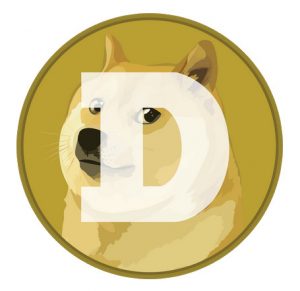
There are two cryptocurrencies that everyone knows about: Bitcoin and Dogecoin. Which is funny, because Dogecoin is barely worth $0.15. So, why is it so well known? Can it even be called a currency?
The short answer to this question is yes. Dogecoin may seem like a joke (it was created as one), and its biggest detractors accuse it of being of “purely artificial” value. But consider how currency works.
There are currencies that represent work being done, such as Terra Luna representing the work being done by Terra. There are currencies that represent insurance, such as the security of Bitcoin’s blockchain.
But all currencies interact with one form of value before any other: They all rely on the person using them that they actually do something. Sure, Bitcoin is secured by its blockchain. But do you ever actually see the blockchain? You cannot see it all the time. If it was compromised, you would not know.
Bitcoin works off of belief that the blockchain is doing what it says it is doing. Similarly, Dogecoin’s value comes from the belief that it is valuable. It might not do any work, secure any transaction, or function in any marketplace, but people still believe it is valuable. And therefore, it is.
Why Trade Doge?
Many currencies assert their value with a limited supply. There are only so many Cardano coins in the world, for example. Dogecoin has no such limitation. It can be multiplied infinitely. That means that any individual coin is not worth anything, but the greater whole of Dogecoin can be worth something.
Dogecoin can be used as a barometer of inflation. Part of the reason why Dogecoin has any value at all is because the currencies around it have fluctuated more than it has. That means that Dogecoin’s value comes from the fact that it is stable despite its inception being fundamentally unstable in concept.
To be frank, you should never invest big in Dogecoin. It is the cryptocurrency equivalent of a penny stock. But like a penny stock, it can be used to make small profits on minor changes in its value. And also like a penny stock, it is not difficult to come into possession of large quantities of it.
It is volatile, subject to go away at any time, and yet still manages to exist as the whole market transforms around it. It is a joke, but plenty of people lose their jobs over jokes every day.
Pros
- Easy to trade
- Profits are low risk and low reward
Cons
- It’s Doge coin
- Unfeasible on every level (in theory)
9. Avalanche – Best Beginner Token

Many cryptocurrencies deal in decentralized apps. These are apps that aid in the blockchain program by dedicating part of their processes to running the blockchain.
Avalanche is a currency that generates is value from one such type of app. The language there is important to pay close attention to.
It does not generate value from one particular app. Instead, its value comes from all the apps that confirm the flow and presence of Avalanche. That means they use the “proof of work” model that Bitcoin and Ethereum use in order to validate themselves.
You might look at that and think, “What makes this currency special, then?” The truth is that there is little that makes Avalanche distinct. There are basically no features that it has that cannot be found in other currencies. However, it is made more stable by the fact that it does not have eyes on it.
Avalanche is growing in value while being relatively undisturbed by the marketplace. This means that it is a good coin to invest in for growth rather than income, as it can be expected to grow for a while.
Why Trade Avalanche?
The appeal of Avalanche is simple: Because it is based off of the Bitcoin model, but considerably less popular, it has a far lower barrier to entry. In many ways, its trends tend to be more similar to how Bitcoin was traded five years ago than how Bitcoin is traded now.
This means that it is cheaper to trade and has less avenues for trading. All in all, the result is a coin that is great for people who are unsure if they want to trade in crypto CFDs, as less avenues for trading means fewer decisions, and therefore less wrong decisions.
Pros
- Low barrier to entry
- Low risk
Cons
- Low returns
10. Polkadot – Best Integrated Blockchain

Polkadot was developed by a co-founder of Ethereum, so you know it already has an interesting history.
Polkadot is a currency that gets its value from indexing blockchains. What that means is that it helps speed up blockchain validation by tracking the contents of different blockchains.
When you pay for something with a currency that exists in a blockchain, it searches the whole blockchain for validation that the money is where each other link in the chain says it is. An index helps the blockchain by storing the information inside the chain as a more easily processed data point.
The efficiency Polkadot’s decentralized apps add to the blockchain translate into value for Polkadot. This means that as the cryptocurrency economy expands, so too does Polkadot’s value.
Why Trade Polkadot?
Polkadot is a relatively new cryptocurrency, coming into existence in the middle of 2020. It has set itself up to compete with Ethereum by having it grow off of advancement of all blockchain technology. This means that rather than necessarily having its value tied to the cryptocurrency economy, Polkadot takes its value from the advancement of the technologies around that very same economy.
Being so new means that it is highly open to CFD trading. Though be warned, while it is an ambitious currency, its ambitions have a good chance of floundering. It is more likely to grow than to shrink, but you should never invest too eagerly in something that has not been tested.
Pros
- New and easy to get into
- Lots of room to grow
Cons
- Potential for volatility
- Untested
Conclusion
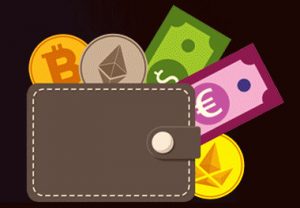
These are just a few of the cryptocurrencies you have available to you, as well as the information you need to get started on trading.
Good luck out there, and do not bet the farm looking for a winning lottery ticket. That is a good way to lose your money fast.
You Might Also Like:





